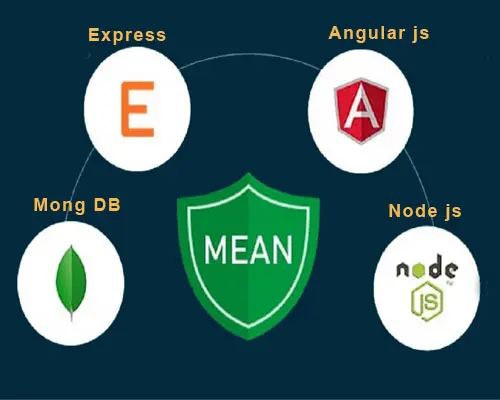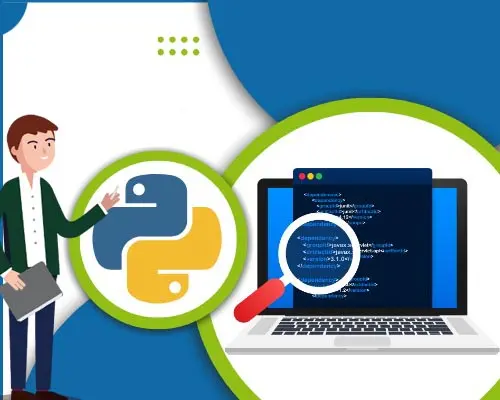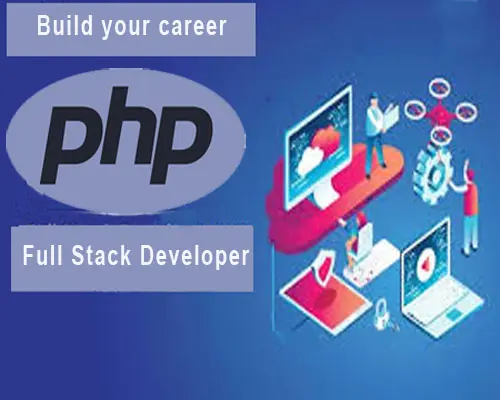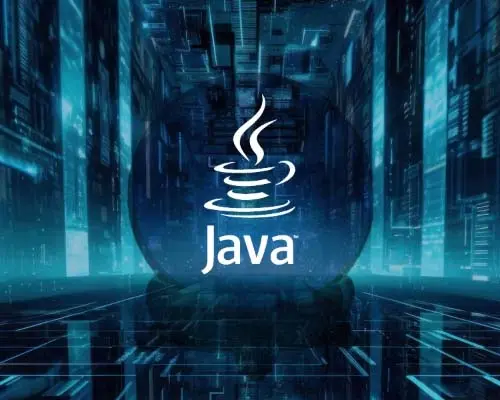Best Artificial Intelligence Training Institute in Kottayam, Kerala
"We Make Only Professionals..."
Industry-Focused AI Course with Hands-On Project and Internship
Software developers led the class.
Industry-Relevant Curriculum
Online and Offline Training Available
Internship with Live Projects
100% Placement Support Until You Get Placed
Learn Artificial Intelligence Fullstack with Faith Infosys, the leading Artificial Intelligence training institute in Kerala offering 100% job placement assistance. Our course is led by experienced software developers and features an industry-relevant curriculum with hands-on training through live projects and internships. We provide both online and offline classes, making it convenient for all learners. At Faith Infosys, our customized Artificial Intelligence Fullstack course is designed to help you master this powerful field with the most advanced and practical Artificial Intelligence training in Kerala.
- Web Scripting – HTML5, CSS3, JavaScript, and TypeScript for interactive web development
- Python Programming Language – Core Python concepts and advanced programming techniques
- Django Framework – Build robust, scalable web applications using Python’s popular web framework
- Database Management – MySQL for storing and managing application data
- Data Science – Data analysis, visualization, and statistical modeling using Python
- Machine Learning – Supervised and unsupervised learning techniques for predictive modeling
- Artificial Intelligence – AI concepts and practical implementations using Python libraries
- Full-Stack Integration – Combine Django, Python, Data Science, ML/AI, and MySQL to build complete full-stack applications
- Version Control – Using Git and GitHub for source code management and collaboration
- Project Work – Real-world application development with live projects and hands-on training
- Web Hosting – Deploying applications on live servers and domain configuration
- SEO Fundamentals – Optimizing websites for better search engine visibility
Master’s in Artificial Intelligence course at Faith Infosys, Kottayam, Kerala, is designed to develop future-ready AI and Data Science professionals through a perfect blend of academic excellence and industry-driven learning. Led by a team of experienced Software Developers, this advanced program features a comprehensive, industry-aligned curriculum that covers the entire AI and Data Science lifecycle- from foundational programming and statistical modeling to cutting-edge machine learning, deep learning, and AI applications.
What truly sets this course apart is its practical, hands-on learning approach, emphasizing real-world projects, live internships, and continuous mentorship from industry experts. Students gain in-depth expertise in data analysis, machine learning, artificial intelligence, Python programming, database management, and modern web technologies, building a well-rounded skill set that aligns with the demands of today’s data-driven economy.
With flexible learning options and access to a state-of-the-art campus environment, learners receive personalized mentorship, c ommunication and soft skills development,and comprehensive placement assistance until successful employment.Join the Master’s in Artificial Intelligence and Data Science program at Faith Infosys to master intelligent technologies, unlock the power of data, and launch a rewarding career in one of the world’s fastest-growing fields.
Artificial Intelligence Syllabus
Overview of Software Development
- Software Engineering Concepts
- Software Engineering Development Activities
- System Development Models and Approaches
- Software Process and Project Management
Software Development Life Cycle
- Requirement Elicitation
- Analysis
- System Design
- Object Design
- Implementation
- Testing
UML
- Introduction
- Need of UML
- Use Case Driven Object Oriented Analysis
- Use Case Model
- Use Case Diagram
- Activity Diagram
- Sequence Diagram
- Collaboration Diagram
- Class Diagram
Project Development Models
- Waterfall
- V model
- Prototype model
- Spiral model
HTML5 - The Static Web Page Creation
- HTML5 Introduction
- Structure
- Elements
- Semantics
- Audio & Video
- Section & Article
- Canvas, Aside
- Drag & Drop
- Forms & Form Elements
CSS 3 - The Presentation Semantics
- CSS Properties, Selectors, Style Declaration Types
- Colors, Backgrounds, Text and Fonts
- Images, Links, Tables and List
- Borders, Padding, Margin
- Cursor, Dimension, Scrollbars, Visibility and Positioning
- Pseudo class & Elements, @Rules (import, font-face, charset)
- Filters, Media Types, Printing and Layouts
- Flexbox Layout, Alignment, and Responsive Design
Bootstrap
- Introduction to Bootstrap
- Bootstrap Grid System
- Creating Layouts with Bootstrap
- Bootstrap CSS - Understanding the CSS
- CSS Customization / Skins
- Responsive Web design with Bootstrap
- Single Page Responsive site with Bootstrap
- Bootstrap Layout Components
- Bootstrap Plug-ins: Transition, Modal, Dropdown, Scrollspy, Tab, Tooltip
- Building Websites with Bootstrap
JavaScript - The Interpreted Programming Language
- Interpreted Programming Languages
- Integrating JavaScript with HTML
- Variables in JavaScript
- Operators in JavaScript
- Expressions in JavaScript
- Arrays in JavaScript
- Handling Loops & Decision structures
- Executing Conditional statements
- Working with Functions
TypeScript - The Typed Superset of JavaScript
- Introduction to TypeScript
- Types and Variables
- Functions
- Objects, Interfaces & Classes
- Enums & Generics
- Advanced Type Concepts
AngularJS
- AngularJS Introduction
- Single Page Application (SPA)
- Directives, Filters and Data Binding
- Views, Controllers and Scope
- Modules, Routes and Factories
Python – Understanding the Preliminaries
- Installation and Environment Variables setting
- Statements and Syntax
- Variables Assignment
- Identifiers
- Basic Inputs
- Numbers
- Operators
Conditionals and Loops
- If else statement
- If elif else statement
- Switch
- While loop, For loop
- Break, Continue, Pass
Sequences: String, List and Tuple, Mapping and Set types
- Sequences
- Strings and operators
- String built-in Functions
- List and methods
- Tuples
- Mapping Type: Dictionaries
- Mapping type built-in functions
- Set Type – operators, built-in methods
Object-Oriented Programming
- Object-Oriented Programming
- Classes
- Class Attributes
- Instances
- Instances and Attributes
- Binding and Method Invocation
- Static Methods and Class Methods
- Inheritance
File handling (read/write CSV, JSON)
- Basic File Handling Concepts
- File Built-in Functions
- Handling CSV Files
- Handling JSON Files
Errors and Exceptions
- Exceptions in Python
- Detecting and Handling Exceptions
- Context Management
- Exceptions as Strings
- Raising Exceptions
- Assertions
- Standard Exceptions
- Creating Exceptions
NumPy and Pandas
- Introduction to NumPy
- NumPy arrays and operations
- Random Number Functions in NumPy
- Introduction to pandas
- DataFrames and Series in Pandas
- Reading and Writing data in Pandas
- Data manipulation: filtering, grouping, merging
Data Visualization
- Introduction to Matplotlib and Seaborn
- Line plots, bar charts, histograms, scatter plots
- Customizing plots
Python Framework - Django
- Introduction to Django
- Install Django
- MVC: Model, View and Template
- About the core files: models.py, urls.py, views.py
- Setting up database connections
- Managing Users & the Django admin tool
- Django URL Patterns and Views
- Django Forms
Relational Database Basics
- Brief History of MySQL
- Relational Databases and Popular Databases
- SQL Statements
Data Manipulation Language (DML)
- INSERT
- UPDATE
- DELETE
- SELECT
Data Definition Language (DDL)
- CREATE
- ALTER
- DROP
Sub-Queries, Joins and Unions with MySQL
- Order By, Like, And & Or, Where, Between
- Joins & Unions
- Aggregate Functions and Grouping
Constraints and Normalization
- Understanding Primary and Foreign Keys
- Understanding Database Normalization
- Views and Triggers
Introduction to Data Science
- What is Data Science?
- Data Science lifecycle
- Data Analyst vs Data Scientist
- Real-world applications
Data Wrangling and Preprocessing
- Handling Missing Values
- Removing Duplicates
- Encoding Categorical Variables
- Feature Scaling
- Outlier Detection & Treatment
Exploratory Data Analysis (EDA)
- Univariate Analysis
- Bivariate Analysis
- Multivariate Visualization
- Correlation and Covariance
Statistical Foundations
- Descriptive Statistics
- Probability Basics
- Inferential Statistics
Feature Engineering & Selection
- Feature Engineering
- Feature Selection
- Dimensionality Reduction (Intro Only)
Introduction to Machine Learning
- What is Machine Learning?
- Types of Machine Learning
- Supervised vs Unsupervised Learning
- Reinforcement Learning (Brief Intro)
- Real-world ML use cases
Scikit-learn & ML Workflow Basics
- Overview of Scikit-learn
- Steps in a typical ML workflow
- Importing data
- Preprocessing
- Model training and evaluation
- Basic classification/regression pipeline using Scikit-learn
Supervised Learning Algorithms
- Linear Regression
- Logistic Regression
- Decision Trees
- Random Forest
- K-Nearest Neighbors (KNN)
- Support Vector Machines (SVM)
Unsupervised Learning
- K-Means Clustering
- Hierarchical Clustering
- PCA (Dimensionality Reduction)
Model Evaluation & Validation
- Train/test split
- Cross-validation
- Classification Metrics
- Accuracy, Precision, Recall, F1-score, ROC-AUC
Introduction to AI
- What is AI?
- History and evolution of AI
- AI vs ML vs DL
- AI subfields (NLP, CV, Robotics, etc.)
Search Algorithms & Problem Solving
- State space search
- BFS, DFS
- Heuristics and A* Algorithm
- Constraint satisfaction problems
Knowledge Representation & Reasoning
- Logic-based representation
- Propositional and First-order logic
- Inference rules, truth tables
Natural Language Processing
- Text preprocessing: tokenization, stemming, lemmatization
- Bag of Words, TF-IDF
- Sentiment analysis
- Named Entity Recognition (NER)
Neural Networks & Deep Learning Basics
- Perceptron and activation functions
- Feedforward networks and backpropagation
- Keras/TensorFlow intro
- Build and evaluate basic neural networks
AI Applications and Trends
- AI in healthcare, finance, robotics, etc.
- Ethical considerations in AI
Data Science is the field of study that combines statistics, programming, and domain knowledge to extract meaningful insights from data.
- Structured Data: Organized in rows and columns (e.g., Excel, SQL databases)
- Unstructured Data: Data without a fixed format (e.g., images, videos, text)
ML is a subset of AI that allows systems to learn from data and improve without explicit programming
AI is the simulation of human intelligence in machines that can perform tasks like reasoning, learning, and problem-solving.
Yes, interns work on industry-based projects such as classification models, chatbots, image recognition, NLP tasks, and more.
Yes, you will receive step-by-step guidance from experienced mentors throughout the internship.
Yes. After successfully completing the training, you will receive a course completion certificate from our ISO 9001:2015 certified institution.
Yes. Git and GitHub are part of the training for proper project management.
Explore Other Full stack Development Courses

MERN Full Stack
MERN Full Stack
Duration:6 Months
3 months course +
3 months internship
Total Hours : 500 Hrs
200 + 300 hrs
View Details
MEAN Full Stack
MEAN Full Stack
Duration:6 Months
3 months course +
3 months internship
Total Hours : 500 Hrs
200 + 300 hrs
View Details
Python Django Full Stack
Python Django Full Stack
Duration:6 Months
3 months course +
3 months internship
Total Hours : 500Hrs
200 + 300 hrs
View Details
Masters in Data science and Analytics
Masters in Data science and Analytics
Duration:6 Months
3 months course +
3 months internship
Total Hours : 500 Hrs
200 + 300 hrs
View Details
Php Laravel codeigniter Full Stack
Php Laravel codeigniter Full Stack
Duration:6 Months
3 months course +
3 months internship
Total Hours : 500 Hrs
200 + 300 hrs
View Details
Flutter
Flutter
Duration:6 Months
3 months course +
3 months internship
Total Hours : 500 Hrs
200 + 300 hrs
View Details
ANDROID
ANDROID
Duration:6 Months
3 months course +
3 months internship
Total Hours : 500 Hrs
200 + 300 hrs
View Details
ASP.NET MVC Core Full stack
ASP.NET MVC Core Full stack
Duration:6 Months
3 months course +
3 months internship
Total Hours : 500 Hrs
200 + 300 hrs
View Details
Java Spring Boot full stack
Java Spring Boot full stack
Duration:6 Months
3 months course +
3 months internship
Total Hours : 500 Hrs
200 + 300 hrs
View Details"Fulfill Your Dreams, Is What We Do..."